Island of Hvar, Sućuraj - Climate, flora and fauna
Climate
 The island of Hvar is known for its pleasant Mediterranean climate and record number of sunny hours. Sućuraj is one of the most sunny and warmest places on the island with over 2700 sunny hours a year. Extremely pleasant climate makes swimming possible from May to October and for those a bit braver all year round. Summers in Sućuraj are dry,
The island of Hvar is known for its pleasant Mediterranean climate and record number of sunny hours. Sućuraj is one of the most sunny and warmest places on the island with over 2700 sunny hours a year. Extremely pleasant climate makes swimming possible from May to October and for those a bit braver all year round. Summers in Sućuraj are dry, 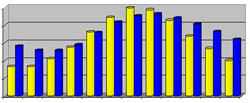 warm and long with refreshing summer winds (maestral and tramontana). Winters are mild and short with temperature rarely below 0 °C. In the winter the winds blow from the South-East (jugo), the North-East (bura) and from the Pelješac peninsula (pelišnjak). Rain is not a rare thing in the winter, but snow is. The last recorded snow that held on the ground in Sućuraj was back in 1985.
warm and long with refreshing summer winds (maestral and tramontana). Winters are mild and short with temperature rarely below 0 °C. In the winter the winds blow from the South-East (jugo), the North-East (bura) and from the Pelješac peninsula (pelišnjak). Rain is not a rare thing in the winter, but snow is. The last recorded snow that held on the ground in Sućuraj was back in 1985.
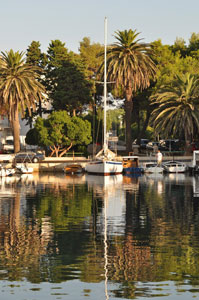 Flora
Flora
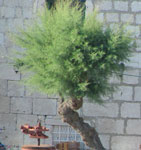
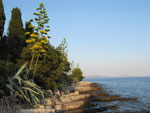 Thanks to the pleasant climate the vegetation surrounding Sućuraj is lush and Mediterranean. There are many palm trees (Phoenix canariensis)in the village and besides the palms, other common trees are salt cedar trees, (Tamarix) which grow by the seaside. Along side the promenade towards the lighthouse there are many agaves (Agava), a plant that has long succulent leaves and lives for many years. The uniqueness of the agave plant is that in a short period of time it grows a few meters long, beautiful flower, tosses its seeds and dies.
Thanks to the pleasant climate the vegetation surrounding Sućuraj is lush and Mediterranean. There are many palm trees (Phoenix canariensis)in the village and besides the palms, other common trees are salt cedar trees, (Tamarix) which grow by the seaside. Along side the promenade towards the lighthouse there are many agaves (Agava), a plant that has long succulent leaves and lives for many years. The uniqueness of the agave plant is that in a short period of time it grows a few meters long, beautiful flower, tosses its seeds and dies.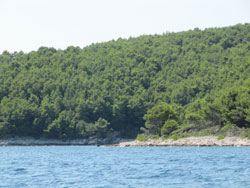
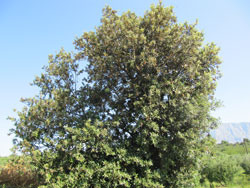 Except the cultivated plants, mentioned in the site of agriculture, there is a lush, evergreen forest with a variety oh herbs, wildflowers, grasses, moss and mushrooms. Many of these plants are edible and (or) therapeutical. Most common of the bigger trees is Aleppo pine (Pinus halepensis). Other common trees are holly oak (Quercus ilex), cypress (Cupressus sempervirens), black pine (Pinus nigra) and laurel (Laurus nobilis).
Except the cultivated plants, mentioned in the site of agriculture, there is a lush, evergreen forest with a variety oh herbs, wildflowers, grasses, moss and mushrooms. Many of these plants are edible and (or) therapeutical. Most common of the bigger trees is Aleppo pine (Pinus halepensis). Other common trees are holly oak (Quercus ilex), cypress (Cupressus sempervirens), black pine (Pinus nigra) and laurel (Laurus nobilis). 
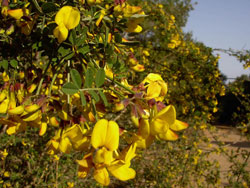 Common shrubs include myrtle (Myrtus communis), winter savory (Satureja montana), mastic tree (Pistacia lentiscus), weaver's broom (Spartium junceum) and strawberry tree (Arbutus unedo) with delicious fruit. One can also find numerous herbs in the nature surrounding Sućuraj such as sage (Saliva officinalis) which is a natural antibiotic, fennel (Foeniculum vulgare),
Common shrubs include myrtle (Myrtus communis), winter savory (Satureja montana), mastic tree (Pistacia lentiscus), weaver's broom (Spartium junceum) and strawberry tree (Arbutus unedo) with delicious fruit. One can also find numerous herbs in the nature surrounding Sućuraj such as sage (Saliva officinalis) which is a natural antibiotic, fennel (Foeniculum vulgare),  oregano (Origanum vulgare), rosemary (Rosmarinus officinalis), dill (Anethum graveolens) and thyme (Thymus vulgaris). Among the wild plants there are many edible ones, most used are asparagus (Asparagus officinalis), mangel (Beta vulgaris) which can also be grown and wild endive (Cichorium pumilum).
oregano (Origanum vulgare), rosemary (Rosmarinus officinalis), dill (Anethum graveolens) and thyme (Thymus vulgaris). Among the wild plants there are many edible ones, most used are asparagus (Asparagus officinalis), mangel (Beta vulgaris) which can also be grown and wild endive (Cichorium pumilum).
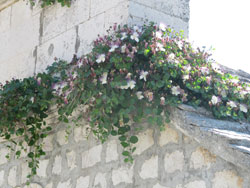 One of forest's most beautiful spring decorations are cyclamen (Cyclymen repandum), small flower that grows in the shadow of large trees. Wild flowers come in all colors, shapes and smells, most often among them is dandelion (Taraxacum). Herb often used in traditional folk medicine is
One of forest's most beautiful spring decorations are cyclamen (Cyclymen repandum), small flower that grows in the shadow of large trees. Wild flowers come in all colors, shapes and smells, most often among them is dandelion (Taraxacum). Herb often used in traditional folk medicine is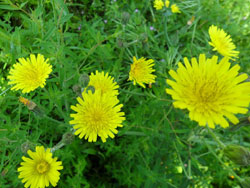 St. John's wort (Hypericum perforatum), used for curing many illnesses. It is used to make tea or can be combined with olive oil to make St. John's wort oil. Excellent therapeutic tea can be made from common mallow (Malva sylvestris). Caper bush (Capparis spinosa) grows on rocky slopes and facades of old stone houses. Its unopened flower buds pickled in wine vinegar make delicious condiment.
St. John's wort (Hypericum perforatum), used for curing many illnesses. It is used to make tea or can be combined with olive oil to make St. John's wort oil. Excellent therapeutic tea can be made from common mallow (Malva sylvestris). Caper bush (Capparis spinosa) grows on rocky slopes and facades of old stone houses. Its unopened flower buds pickled in wine vinegar make delicious condiment.
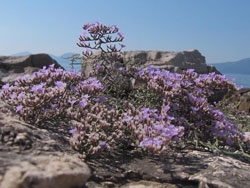
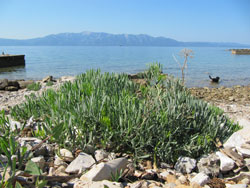 On the rocky shores, which are common in Sućuraj, just by the sea line grows an unique plant, Limonium cancellatum, a highly endangered and protected endemic species. On those rocky beaches also grows rock samphire (Crithmum maritimum),a tasty delicacy that requires short boiling before eating. The sea bottom is also filled with many species of algae such as green algae (Chlorophyceae), red algae (Rhodophyceae) and brown algae (Phaeophyceae). Along side them, the sea bottom is filled with underwater meadows
On the rocky shores, which are common in Sućuraj, just by the sea line grows an unique plant, Limonium cancellatum, a highly endangered and protected endemic species. On those rocky beaches also grows rock samphire (Crithmum maritimum),a tasty delicacy that requires short boiling before eating. The sea bottom is also filled with many species of algae such as green algae (Chlorophyceae), red algae (Rhodophyceae) and brown algae (Phaeophyceae). Along side them, the sea bottom is filled with underwater meadows 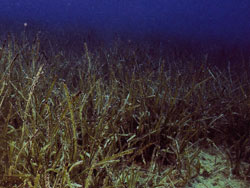 of flowering sea plants such as Neptune grass or Mediterranean tapeweed (Posidonia oceanica). Those wide meadows are an important link in the sea ecosystem because they make large amounts of oxygen and therefore are called the lungs of the sea. After they have fulfilled their purpose, the leaves of this plant are tossed ashore by sea currents to make large deposits. In the area near the town, those deposits of posidonia can be found in the bottom of Perna bay, which probably got its name from it (in Croatian the plant is called "perušina").
of flowering sea plants such as Neptune grass or Mediterranean tapeweed (Posidonia oceanica). Those wide meadows are an important link in the sea ecosystem because they make large amounts of oxygen and therefore are called the lungs of the sea. After they have fulfilled their purpose, the leaves of this plant are tossed ashore by sea currents to make large deposits. In the area near the town, those deposits of posidonia can be found in the bottom of Perna bay, which probably got its name from it (in Croatian the plant is called "perušina").
Fauna
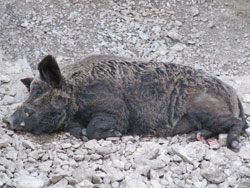 Largest forest animal in the area surrounding Sućuraj is the wild boar (Sus scrofa). It is not an indigenous species, but has come to the island of Hvar in the early 1990. Although many claimed that their survival was impossible due to the lack of fresh water, wild boars show to be more resilient than everybody thought . Their survival in the dry summer months can be explained by the fact that along the coast line somewhere there are fresh water springs in the sea bottom. These springs make the sea water less salty and the boars were seen drinking it. They are also excellent swimmers and highly adaptive animals. Boars are mostly active at night and cause a lot of damage to farmers (luckily they are not very fond of olives). Although some people are afraid of them, no case of attack on humans was ever recorded in Sućuraj and the surrounding area because the boars flee when they see humans. They are also an interesting prey to hunters of Sućuraj's hunting society.
Largest forest animal in the area surrounding Sućuraj is the wild boar (Sus scrofa). It is not an indigenous species, but has come to the island of Hvar in the early 1990. Although many claimed that their survival was impossible due to the lack of fresh water, wild boars show to be more resilient than everybody thought . Their survival in the dry summer months can be explained by the fact that along the coast line somewhere there are fresh water springs in the sea bottom. These springs make the sea water less salty and the boars were seen drinking it. They are also excellent swimmers and highly adaptive animals. Boars are mostly active at night and cause a lot of damage to farmers (luckily they are not very fond of olives). Although some people are afraid of them, no case of attack on humans was ever recorded in Sućuraj and the surrounding area because the boars flee when they see humans. They are also an interesting prey to hunters of Sućuraj's hunting society.

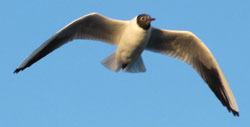
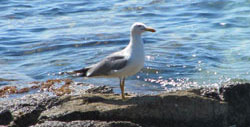 Besides wild boars, other kinds of animals can be found around Sućuraj, which include jackrabbits, martens, mongooses, bats, hedgehogs, birds, snakes, lizards, frogs, snails, insects and other small animals. Common birds that live in Sućuraj throughout the whole year are: seagull, pheasant, Eurasian eagle-owl, blue rock thrush, blackcap, sparrow, falcon, hawk and blackbird. Birds that come in autumn are: goldfinch, Eurasian siskin, European greenfinch, common linnet, hawfinch,finch etc.; and in spring swallows and swifts. Because of the vicinity of the swamp habitat in the Neretva valley, occasional guests in Sucuraj are swamp birds.Two species of birds that are interesting for their
Besides wild boars, other kinds of animals can be found around Sućuraj, which include jackrabbits, martens, mongooses, bats, hedgehogs, birds, snakes, lizards, frogs, snails, insects and other small animals. Common birds that live in Sućuraj throughout the whole year are: seagull, pheasant, Eurasian eagle-owl, blue rock thrush, blackcap, sparrow, falcon, hawk and blackbird. Birds that come in autumn are: goldfinch, Eurasian siskin, European greenfinch, common linnet, hawfinch,finch etc.; and in spring swallows and swifts. Because of the vicinity of the swamp habitat in the Neretva valley, occasional guests in Sucuraj are swamp birds.Two species of birds that are interesting for their 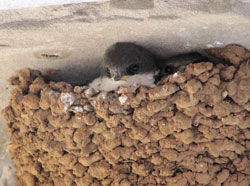 cohabitation
cohabitation 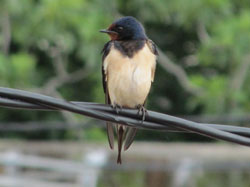 with humans are seagulls and swallows. Seagulls (Larus) always follow fishermen and
with humans are seagulls and swallows. Seagulls (Larus) always follow fishermen and  can also fish for themselves. Swallows (Hirundo rustica) make their nests on facades of houses and return to them every spring. They mostly feed on insects that they can catch in flight, bring up their young in the summer and, come winter, leave for Africa.
can also fish for themselves. Swallows (Hirundo rustica) make their nests on facades of houses and return to them every spring. They mostly feed on insects that they can catch in flight, bring up their young in the summer and, come winter, leave for Africa.
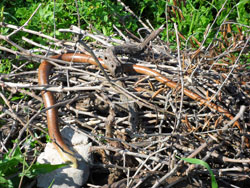 Most common snake is a non-poisonous grass snake (Natrix natrix). Caution is necessary when dealing with common European adder (Vipera berus) and long-nosed viper (Vipera ammodytes). These two snakes possess dangerous venom, so while walking in the woods long pants and good shoes are required, as well as a lot of caution. There are not that many snakes thanks to mongooses (Herpestes auropunctatus), which were populated to the island of Hvar to hunt snakes. An animal that also hunts and eats snakes is sheltopusik, or European legless lizard(Ophisaurus apodus). Sheltopusik is a legless brown lizard from which humans can benefit in many ways. At first glance it looks like a snake, so many fear him needlessly. It can grow to 1 meter in length, and feeds on snakes, snails, field mice and insects.
Most common snake is a non-poisonous grass snake (Natrix natrix). Caution is necessary when dealing with common European adder (Vipera berus) and long-nosed viper (Vipera ammodytes). These two snakes possess dangerous venom, so while walking in the woods long pants and good shoes are required, as well as a lot of caution. There are not that many snakes thanks to mongooses (Herpestes auropunctatus), which were populated to the island of Hvar to hunt snakes. An animal that also hunts and eats snakes is sheltopusik, or European legless lizard(Ophisaurus apodus). Sheltopusik is a legless brown lizard from which humans can benefit in many ways. At first glance it looks like a snake, so many fear him needlessly. It can grow to 1 meter in length, and feeds on snakes, snails, field mice and insects.
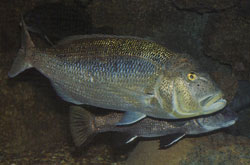 In the sea surrounding Sućuraj there are many kinds of animals that are a part of these groups: fish, sea mammals, cephalopods, crabs, shellfish, snails, sponges, polychaetes, stingers, bryozoans, tunicates and echinoderms. Most of there creatures are highly endangered by human activities. Most common fish are: sardine (Sardina pilchardus), European anchovy (Engraulis encrasicolus), European conger (Conger conger), mullet (Mullus), European hake (Merluccius merluccius), Atlantic mackerel (Scomber scombrus), chub mackerel (Scomber japonicus), golden grey mullet (Liza aurata), European seabass (Dicentrarchus labrax),
In the sea surrounding Sućuraj there are many kinds of animals that are a part of these groups: fish, sea mammals, cephalopods, crabs, shellfish, snails, sponges, polychaetes, stingers, bryozoans, tunicates and echinoderms. Most of there creatures are highly endangered by human activities. Most common fish are: sardine (Sardina pilchardus), European anchovy (Engraulis encrasicolus), European conger (Conger conger), mullet (Mullus), European hake (Merluccius merluccius), Atlantic mackerel (Scomber scombrus), chub mackerel (Scomber japonicus), golden grey mullet (Liza aurata), European seabass (Dicentrarchus labrax), 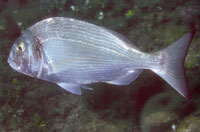 brown ray (Raja miraletus), painted comber (Serranus scriba), common two-banded seabream (Diplodus vulgaris), John Dory or Peter's Fish (Zeus faber), greater amberjack (Seriola dumerili), gilt-head (sea) bream (Sparus aurata), tuna (Thunnus thynnus), bogue (Boops boops), red porgy (Pagrus pagrus), common dentex (Dentex dentex), white seabream (Diplodus sargus), annular seabream (Diplodus annularis), addled seabream (Oblada melanura), common pandora
brown ray (Raja miraletus), painted comber (Serranus scriba), common two-banded seabream (Diplodus vulgaris), John Dory or Peter's Fish (Zeus faber), greater amberjack (Seriola dumerili), gilt-head (sea) bream (Sparus aurata), tuna (Thunnus thynnus), bogue (Boops boops), red porgy (Pagrus pagrus), common dentex (Dentex dentex), white seabream (Diplodus sargus), annular seabream (Diplodus annularis), addled seabream (Oblada melanura), common pandora 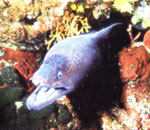 (Pagellus erythrinus), salema porgy (Sarpa salpa), Mediterranean moray (Muraena helena), greater weever (Trachinus draco), sharpsnout seabream (Diplodus puntazzo), picarels (Spicara), damselfish (Chromis chromis), Atlantic bonito (Sarda sarda), European barracuda (Sphyraena sphyraena), Mediterranean sand smelt (Atherina hepsetus), black scorpionfish (Scorpaena porcus), red scorpionfish (Scorpaena scrofa) anler (Lophius piscatorus) and common smooth-hound (Mustelus mustelus). The common smooth-hound is a shark species, not dangerous, but very tasty as well as all the above mentioned fish. Another animal that can be seen in the sea around Sućuraj is dolphin (Tursiops truncates). It is an extremely intelligent animal loved by everyone, except fishermen because the dolphins tend to destroy their fishing nets.
(Pagellus erythrinus), salema porgy (Sarpa salpa), Mediterranean moray (Muraena helena), greater weever (Trachinus draco), sharpsnout seabream (Diplodus puntazzo), picarels (Spicara), damselfish (Chromis chromis), Atlantic bonito (Sarda sarda), European barracuda (Sphyraena sphyraena), Mediterranean sand smelt (Atherina hepsetus), black scorpionfish (Scorpaena porcus), red scorpionfish (Scorpaena scrofa) anler (Lophius piscatorus) and common smooth-hound (Mustelus mustelus). The common smooth-hound is a shark species, not dangerous, but very tasty as well as all the above mentioned fish. Another animal that can be seen in the sea around Sućuraj is dolphin (Tursiops truncates). It is an extremely intelligent animal loved by everyone, except fishermen because the dolphins tend to destroy their fishing nets.
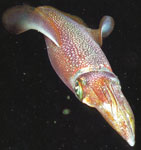 Of the cephalopods most common are squid (Loligo vulgaris), cuttlefish (Sepia officinalis), octopus (Octopus) and the musky octopus (Eledone moschata). The crabs that inhabit the sea around Sućuraj include marbled
Of the cephalopods most common are squid (Loligo vulgaris), cuttlefish (Sepia officinalis), octopus (Octopus) and the musky octopus (Eledone moschata). The crabs that inhabit the sea around Sućuraj include marbled 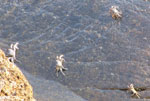 rock crab or marbled crab (Pachygrapsus marmoratus), warty crab or yellow crab (Erophia verrucosa), spider crab (Maja crispata), European lobster or common lobster (Homarus gammarus), rock lobster (Palinuridae), crystal prawn (Periclimenes scriptus) and common hermit crab or soldier crab (Pagurus bernhardus). Smaller crab species such as rock crab and yellow crab can be seen on the rocky sea front during tides, while soldier crabs are interesting because of their habit to occupy empty snail shells.
rock crab or marbled crab (Pachygrapsus marmoratus), warty crab or yellow crab (Erophia verrucosa), spider crab (Maja crispata), European lobster or common lobster (Homarus gammarus), rock lobster (Palinuridae), crystal prawn (Periclimenes scriptus) and common hermit crab or soldier crab (Pagurus bernhardus). Smaller crab species such as rock crab and yellow crab can be seen on the rocky sea front during tides, while soldier crabs are interesting because of their habit to occupy empty snail shells.
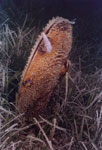 The largest shellfish that can be found in the sea around Sućuraj is noble pen shell or fan mussel (Pinna nobilis), can grow to 1 meter and is strictly protected. Besides the fan mussel you
The largest shellfish that can be found in the sea around Sućuraj is noble pen shell or fan mussel (Pinna nobilis), can grow to 1 meter and is strictly protected. Besides the fan mussel you 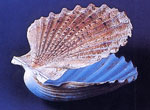 can often see other shellfish such as scallop (Pecten jacobaeus), oyster (Ostrea), Mediterranean awning clam (Solemya togata), crenulate nut clam (Nuculana pella), Mediterranean mussel (Mytilus galloprovincialis), date shell or date mussel (Lithophaga lithophaga), rough cockle (Acanthocardia tuberculata), rosy razor clam (Solecurtus strigilatus), warty venus (Venus verrucosa), smooth clam (Callista chione) and many others.
can often see other shellfish such as scallop (Pecten jacobaeus), oyster (Ostrea), Mediterranean awning clam (Solemya togata), crenulate nut clam (Nuculana pella), Mediterranean mussel (Mytilus galloprovincialis), date shell or date mussel (Lithophaga lithophaga), rough cockle (Acanthocardia tuberculata), rosy razor clam (Solecurtus strigilatus), warty venus (Venus verrucosa), smooth clam (Callista chione) and many others.
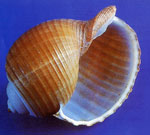 There are also many species of snails and on the rocky beaches on the sea line you can find Monodonta turbinata, Monodonta articulata and a few species of limpet (Patella caerulea, Patella ulyssipoemsis and Patella rustica). Snails common on the sea bottom are: green ormer (Haliotis tuberculata),
There are also many species of snails and on the rocky beaches on the sea line you can find Monodonta turbinata, Monodonta articulata and a few species of limpet (Patella caerulea, Patella ulyssipoemsis and Patella rustica). Snails common on the sea bottom are: green ormer (Haliotis tuberculata), 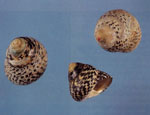
 needle whelk (Bittium reticulatum, Cerithium vulgatum), brown cowry (Luria lurida), helmet shell (Cassidaria echinophora), purple dye murex (Bolinus brandaris), banded dye-murex (Phyllanotus trunculus), zoned mitre (Mitra zonata) and giant turn (Tonna galea) which is the largest of these.
needle whelk (Bittium reticulatum, Cerithium vulgatum), brown cowry (Luria lurida), helmet shell (Cassidaria echinophora), purple dye murex (Bolinus brandaris), banded dye-murex (Phyllanotus trunculus), zoned mitre (Mitra zonata) and giant turn (Tonna galea) which is the largest of these.
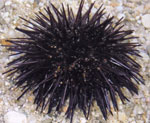 Of the echinoderms most widely spread is the black sea urchin (Arbacia lixula). It lives only in clean seas but requires caution when dealing with because it can sting which can be very unpleasant.
Of the echinoderms most widely spread is the black sea urchin (Arbacia lixula). It lives only in clean seas but requires caution when dealing with because it can sting which can be very unpleasant.
If you are interested in the theme of the above text and you plan to take a field trip from Sućuraj, we recommend you to visit: the Malacological Museum at the Franciscan monastery in Makarska, Ornithological collection in Metković and Natural history museums in Split and Dubrovnik.








 English
English  Hrvatski
Hrvatski  Deutsch
Deutsch  Italiano
Italiano  Polski
Polski  Čeština
Čeština  Slovenčina
Slovenčina  Slovenščina
Slovenščina 

































